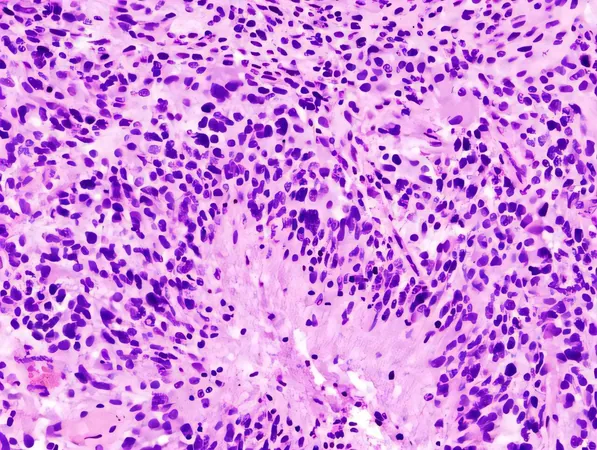
Breakthrough in Glioblastoma Research: Scientists Unveil New Treatment Targets!
2024-11-04
Author: Michael
Breakthrough in Glioblastoma Research: Scientists Unveil New Treatment Targets!
A groundbreaking study from the University of Toronto has identified critical new targets that could revolutionize the treatment of glioblastoma, an aggressive and deadly form of brain cancer. This research highlights significant genetic vulnerabilities found in cancer stem cells derived from actual patients, focusing on the inherent diversity and complexity of glioblastoma tumors.
Understanding Glioblastoma
Glioblastoma stands as the most prevalent brain cancer among adults, notorious for its resistance to conventional therapies. This resistance is largely attributable to specialized cancer stem cells, which not only survive initial treatments but also regenerate new tumors that are often impervious to subsequent therapies.
Research Insights
Graham MacLeod, co-first author of the study and senior research associate at the Donnelly Centre for Cellular and Biomolecular Research, emphasized the duality of glioblastoma's threat: "The composition of glioblastoma tumors is exceptionally variable, both within a single tumor and across different patients. This variability has created significant challenges in effectively targeting the cancer."
Published Findings
Published in the reputable journal Cancer Research, this study delved into the diverse characteristics of glioblastoma cancer stem cells. Researchers discovered a gradient between two distinct cell subtypes: one resembling improperly developed normal neurocells and the other reflecting an inflammatory, injury-response state. By identifying treatment targets for each subtype, the researchers aim to create more comprehensive and effective therapeutic strategies.
Previous Research Correlation
This pivotal study follows previous work published in Cell Reports, which pinpointed vulnerabilities in glioblastoma stem cells affecting their response to chemotherapy. By conducting CRISPR/Cas9 screenings across a wide array of patient-derived cell lines from 30 participants, this research marks the largest screening initiative in this field to date. These patient lines, crafted by Professor Peter Dirks from SickKids, provided a more accurate model of glioblastoma, allowing researchers to discover crucial genes such as OLIG2 and MEK for the developmental subtype, and FAK and B1-Integrin for the injury-response subtype.
Optimism for Patients
Fatemeh Molaei, co-first author and graduate student, expressed optimism about these findings: “Unlike traditional models, our study offers insights directly reflecting patient tumors, making our discoveries more applicable to real-world treatments."
Tailored Therapies
Addressing the pressing need for personalized treatment, Principal Investigator Stéphane Angers stated, "By focusing on the various subtypes of glioblastoma stem cells, our research supports the development of tailored therapies that selectively target the most prevalent cell type or combine approaches for more robust treatment."
Urgency in Treatment
The research team conveyed a sense of urgency as they noted glioblastoma's adaptability is both its greatest strength and a formidable challenge for treatment. As they forge ahead, this innovative study not only enhances our understanding of glioblastoma but also paves the way for new therapeutic strategies that could significantly improve patient outcomes.
Hope for Glioblastoma Patients
With the stakes so high in the battle against this devastating disease, the new insights from this research promise a glimpse of hope for glioblastoma patients and their families in the fight for survival.









 Brasil (PT)
Brasil (PT)
 Canada (EN)
Canada (EN)
 Chile (ES)
Chile (ES)
 España (ES)
España (ES)
 France (FR)
France (FR)
 Hong Kong (EN)
Hong Kong (EN)
 Italia (IT)
Italia (IT)
 日本 (JA)
日本 (JA)
 Magyarország (HU)
Magyarország (HU)
 Norge (NO)
Norge (NO)
 Polska (PL)
Polska (PL)
 Schweiz (DE)
Schweiz (DE)
 Singapore (EN)
Singapore (EN)
 Sverige (SV)
Sverige (SV)
 Suomi (FI)
Suomi (FI)
 Türkiye (TR)
Türkiye (TR)